
WRITING: ARGUMENTATIVE ESSAY THE OPPOSING CLAIM
 |
Overview
In this unit, you will learn how to address an opposing claim to your thesis in the third body paragraph of an argumentative essay on the AIR Assessment. At the end of the unit, you will review prepositional phrases. Above you will find a list of key vocabulary for this unit.
*Download the attached pdf to take notes during the lesson. 
In this unit, you will develop the third body paragraph for your argumentative essay.
Over the next few units we will be constructing an argumentative essay together based on the following prompt.
Construct a multi-paragraph response in which you support a claim about whether or not juvenile offenders should be sentenced to prison. Use the information from the texts in your response.
Before we begin you will need to reread the following two passages:
PASSAGE 1
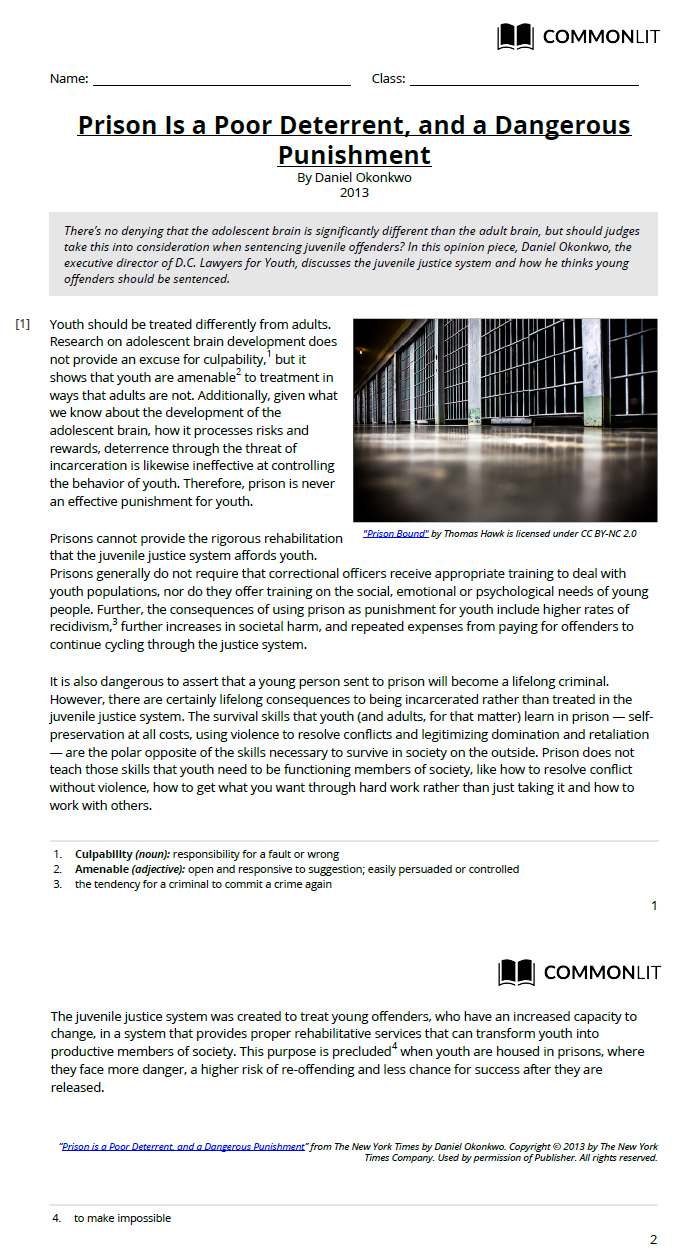 Prison Is a Poor Deterrent, and a Dangerous Punishment PDF |
PASSAGE 2
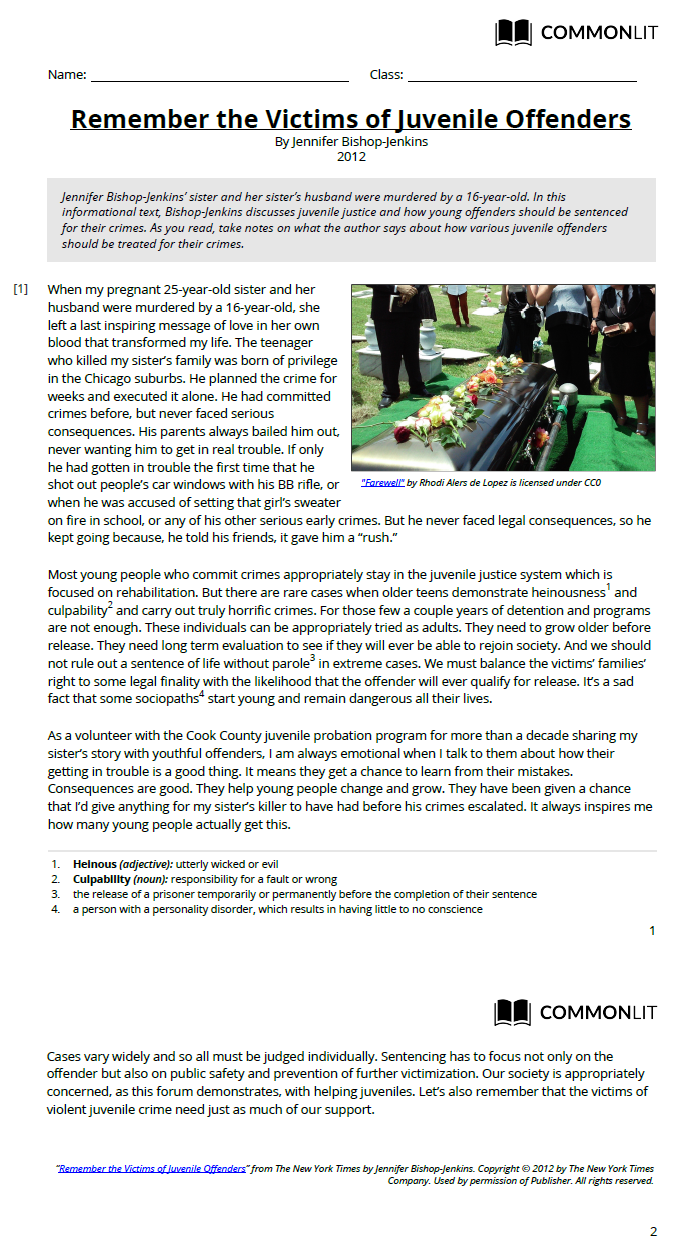 Remember the Victims of Juvenile Offenders PDF |
Remember the outline from the previous unit...
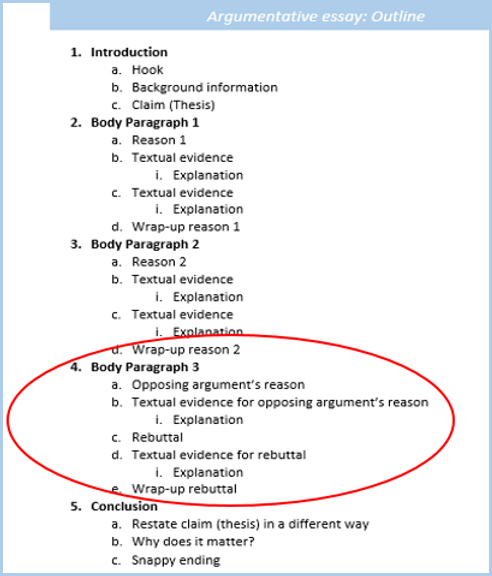 |
We will be working towards building that outline little by little throughout the following units.
Body Paragraphs
The body is the part of an essay, report, or speech that explains and develops the thesis or main idea. Body paragraphs come after the introduction and before the conclusion. The body is usually the longest part of an essay, and each body paragraph may begin with a topic sentence.
You developed the first two body paragraphs of your argumentative essay in the previous unit. The first two body paragraphs focused on reasons that support and prove your claim.
The third body paragraph is where you will address the opposing argument/claim by discussing a reason or reasons that someone would say your claim is wrong.
Remember from Unit 6: If an author presents only his or her perspective and ignores the other side of an issue, a text may be too one sides and mislead readers. A good argument includes information about the opposing argument, in which an author acknowledges that there is a view different from his or her own. However, the author will then provide a strong rebuttal, or counterargument, to refute it, effectively dismissing it with support for his or her own claim.
The third body paragraphs in your argument will contain the following:
1.
Opposing claim/reason (Topic Sentence)
2.
Textual evidence supporting that opposing claim (with citation)
Explanation of how the textual evidence supports the opposing claim
3.
Rebuttal
4.
Textual evidence supporting your rebuttal (with citation)
Explanation of how the textual evidence supports the rebuttal
5.
Wrap-Up of the rebuttal
Choosing a Reason (topic) for the Opposing Claim
In order to create a reason for the opposing claim, you must revisit your textual evidence (the notes you took in Unit 7).
Since my claim/thesis is AGAINST the idea of having one group of close knit, I will look at the FOR side of my notes when dealing with the opposing claim.
MODEL
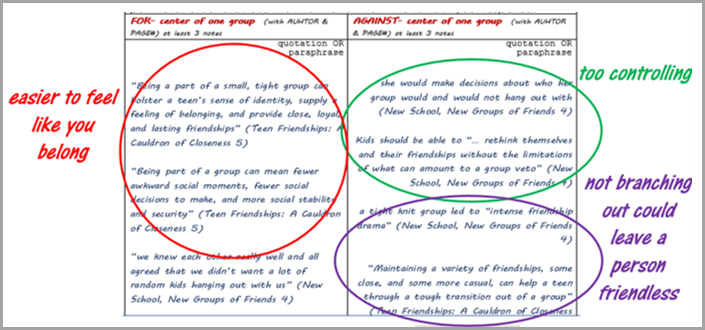 |
As you can see in the MODEL, I grouped my textual evidence into three major categories. “Too controlling” and “Not branching out could leave a person friendless” were the two reasons (topic sentences) I chose to support my claim. “Easier to feel like you belong” will become the reason that supports the opposing claim.
Textual Evidence
The textual evidence is evidence/support used to support an argument/position, and is taken from another text. It is provided in the form of quotation or paraphrase.
The majority of your textual evidence should come from the notes you already took.
Review I.C.E. (Introduce, Cite, Explain)
 |
When incorporating your textual evidence, all you have to remember is I.C.E. Introduce. Cite. Explain.
The I.C.E. acronym helps writers remember to communicate the ideas of other scholars in an orderly way:
INTRODUCE: Introduce all your quotes using introductory phrases. Here are some examples: (the introduction is bolded)
CITE: Provide appropriate parenthetical citations for all quotes and paraphrases. Here are some guidelines for MLA style citation: (the citation is bolded)
EXPLAIN: Make sure to explain your quotes. Provide analysis that ties them back to your main idea / topic sentence. In other words, comment on the evidence in order to incorporate it into the essay you’re writing. Here are some examples: (the explanation is bolded)
Use the following chart to introduce your textual evidence and explanations in an academic way:
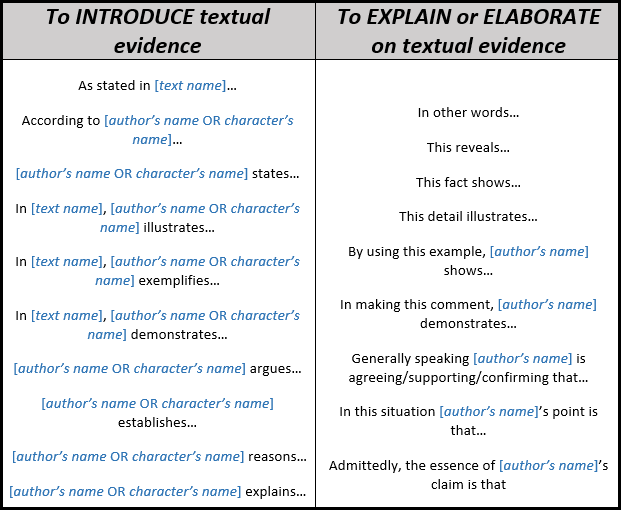 |
Wrap-Up Sentence
A wrap-up sentence is a statement that connects the paragraph back to the thesis. How does this whole paragraph support the thesis and tie back to the prompt?
MODEL OF OPPOSING CLAIM BODY PARAGRAPH
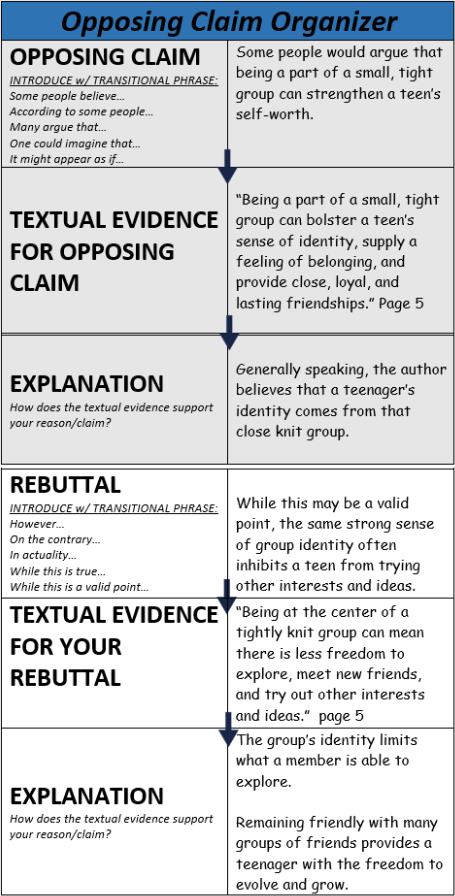 |
MODEL OUTLINE
OPPOSING CLAIM: Some people would argue that being a part of a small, tight group can strengthen a teen's self-worth.
TEXTUAL EVIDENCE: The author of “Teen Friendships: A Cauldron of Closeness” claims that “Being a part of a small, tight group can bolster a teen’s sense of identity, supply a feeling of belonging, and provide close, loyal, and lasting friendships” (5). Generally speaking, the author believes that a teenager’s identity comes from that close knit group.
REBUTTAL: However, that strong sense of group identity often inhibits a teen from trying other interests and ideas.
TEXTUAL EVIDENCE: According to “Teen Friendships: A Cauldron of Closeness”, “Being at the center of a tightly knit group can mean there is less freedom to explore, meet new friends, and try out other interests and ideas” (5). The group’s identity limits what a member is able to explore.
WRAP-UP: Therefore, remaining friendly with many groups of friends provides a teenager with the freedom to evolve and grow.
 |
IT'S YOUR TURN
Now develop your own outline for body paragraphs 1 and 2!
(make sure to use your notes from unit 7)
Prompt: Read and take notes on the two articles below about the topic of juvenile detention. Construct a multi-paragraph response in which you support a claim about whether or not juvenile offenders should be sentenced to prison. Use the information from the texts in your response.
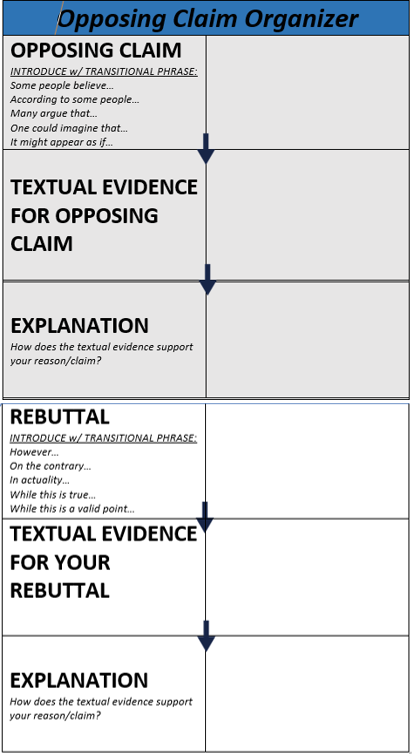 |
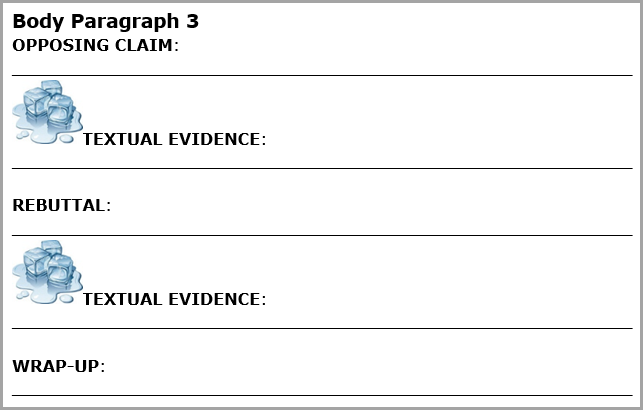 |
*You can print out this graphic organizer to help you.
Grammar Lesson 10: PREPOSITIONAL PHRASES
A preposition is a word that connects two phrases or ideas in a sentence. Prepositions are used to specify when, where, how, and why. A simple prepositional phrase includes a preposition and its object, which can be a single word or a group of words expressing a single idea. The purpose of using a prepositional phrase is to provide additional information about a noun, verb, adjective, or adverb.
We use prepositional phrases when we want to specify when or where something is, or in which situations something is true.
Examples:
Click on the following link for a video further explaining prepositional phrases.
 |
Let's Practice
1. Identify the prepositional phrase or phrases.
|
|
3. Identify the prepositional phrase or phrases.
|
| |
 |
| Prepositional Phrases |